How to Keep Your Polarized Sunglasses Like Brand New
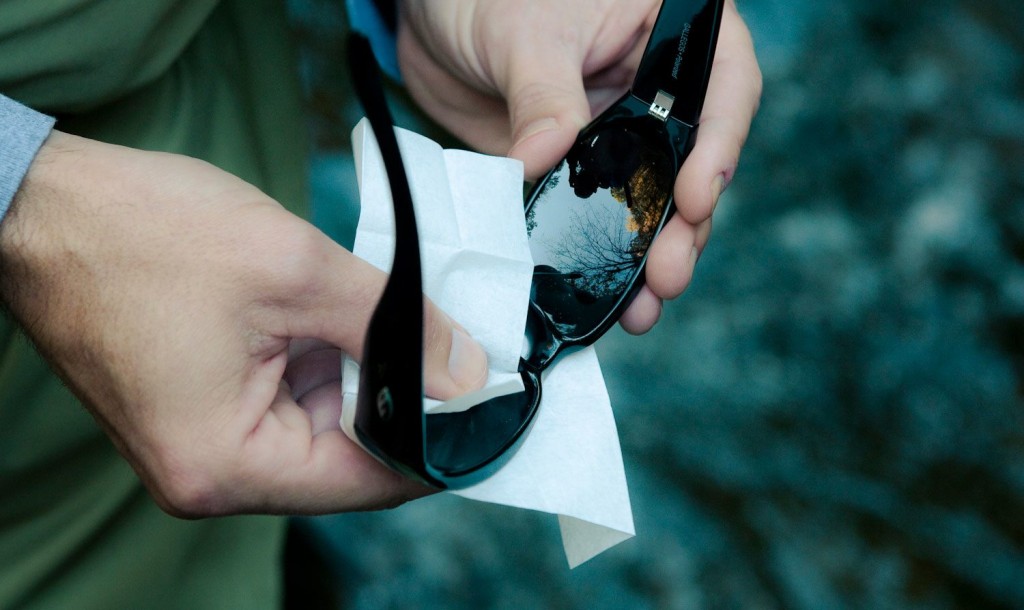
Look out micro-fiber cloths, there’s a new player in town
My polarized sunglasses are a critical piece of equipment in my fly fishing and guiding. I depend on them for keeping my vision clear and crisp, so I can untangle knots quickly, spot fish effectively and make precise presentations on the water. I don’t know about you guys, but I’m constantly having to clean the lens on my sunglasses on and off the water to keep them functioning at their highest level. In the past, I’ve depended primarily on using micro-fiber cloths to clean my polarized sunglasses. These micro-fiber cloths work pretty well, but after a while, they get packed full of dirt and grime or get saturated on those wet days, and start losing their effectiveness. I’ve got some micro-fiber cloths now that really don’t clean all that well, even after I’ve taken the time to wash them. Plus, I’m always trying to find a place to stow them in a safe place that’s free of dirt and dust, like a zip-lock bag.
Recently, my parents turned me onto Zeiss Lens Cleaning Wipes. You can purchase them at your local Walmart or Pharmacy (Rite-Aid or CVS), from $3-10 depending on the size of the box. I’ve fallen in love with these individually wrapped pre-moistened lens cleaning wipes, that are safe to use on your sunglasses, camera lens and electronics. It takes just a few seconds to unwrap one of these pre-moistened wipes, and do a quick once over on the gear you need cleaned. Almost instantly, it dries 100%, leaving you with a super clean surface that looks brand new. These days, before I head out for a day on the water, I quickly clean my polarized sunglasses with them, and then throw three or four more in my shirt or jacket pocket in case I need them. If you fish in saltwater,
Read More »GAS
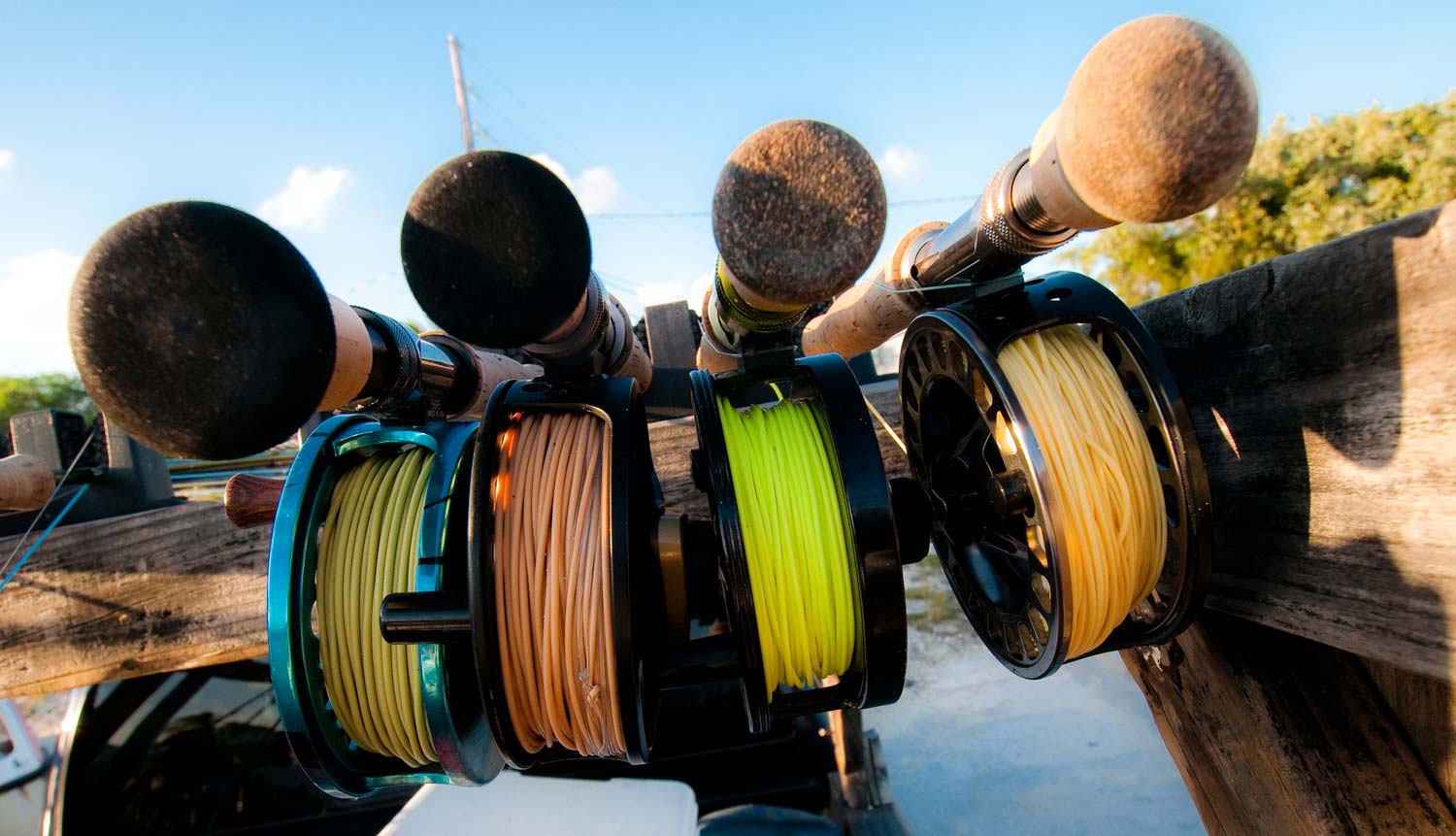
By John Byron
It’s a thing. Gear Acquisition Syndrome. GAS.
The most you can use at any one time is one. One guitar. One fountain pen. One fly rod. But how many you have is N, where N is a much bigger number than one.
That’s GAS.
The concept and phrasing, GAS, came from the world of music. Yes, how many guitars, pickups, mikes, etc. does a person need? And from photography, cameras, lenses, etc.
But perhaps the largest cluster of GAS-plagued souls is in fly fishing: rods, reels, lines, boots, buffs, hoodies, packs and the list is endless.
Does the rumor of a new line of fly rods from Scott or Loomis or Sage make your heart flutter? Has Amazon told you that you can’t return any more purchases for refund? Have you convinced your significant other that only a certain line on a certain reel will actually catch bonefish and you don’t have either but found a sale price online and your next trip will fail if you don’t buy them?
These are signs of GAS. But the surefire way to know if you’ve got it is to look in your garage or down in your basement:
Are your fly rods a small, neat collection of well-purposed tools? Or an inventory challenge?
Did you recently look in a drawer, find a reel, and say ‘Gee, I forgot I had that’?
Do you have to move a lot of fishing tackle aside to find fishing tackle?
Do you have more than twenty
River Of Dreams
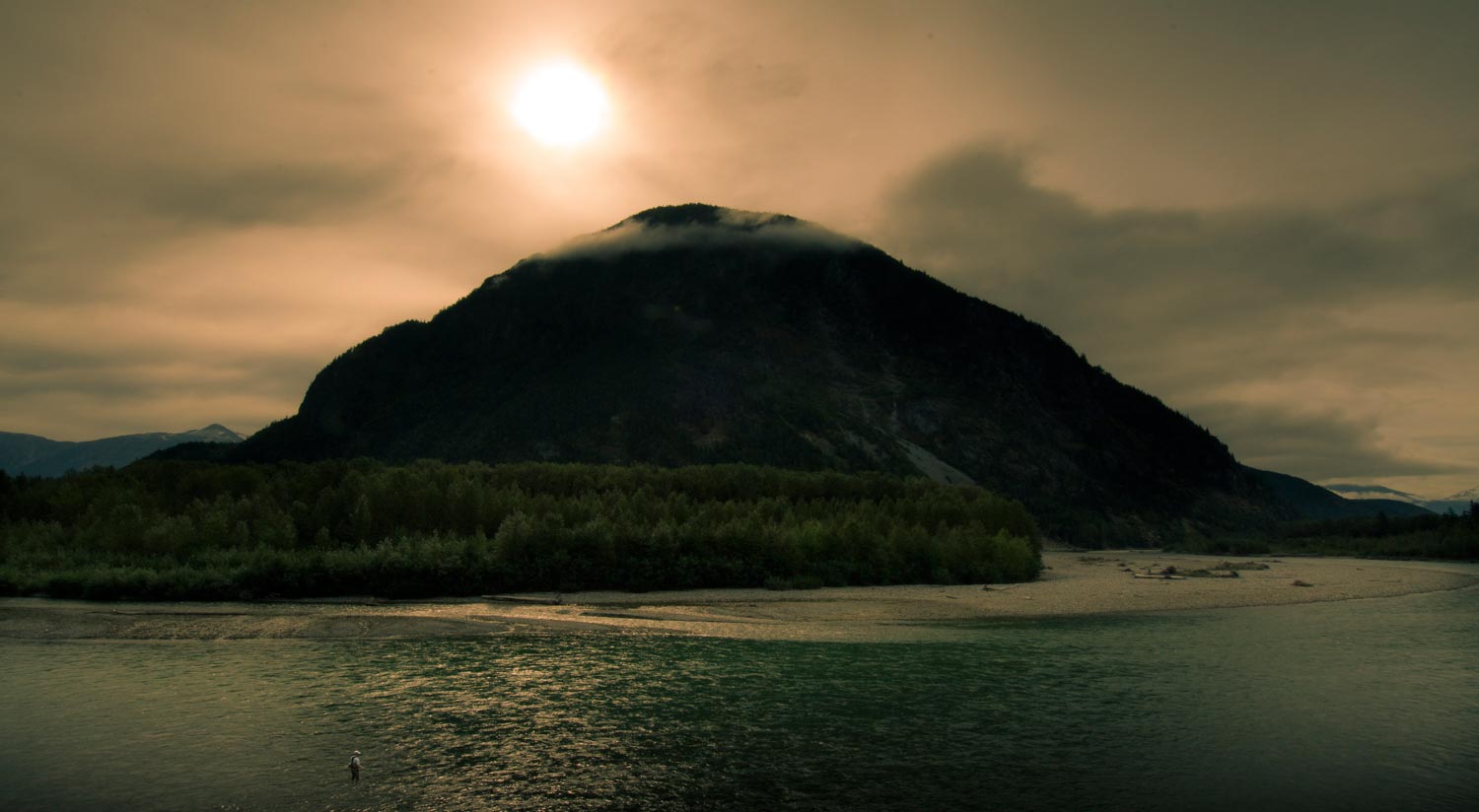
By Louis Cahill
I DREAM OF WAKING IN A FOREST.
Or where a forest had been, now sooty black. Smoke swirls, orange eyes peer from hunks of coal. Charred trees accuse the sky. White ashes whirl in the air, angels lifted to heaven. I’ve slept through some great conflagration.
I walk, leaving white footprints on blackened ground. Smoke, steals my vision. Trees turn from black to gray, to white. I stop at a river bank where ash becomes grass, high and yellow like autumn. Dark water churns, its surface oily in the soft light. Standing in the river, bare to the waist, my father, his eyes fixed on the water, his hair wet and tossed, his arms outstretched like a cormorant drying its wings. In the current, the dark shapes of fish.
I follow the sound of falling water to a large pool ringed with tall grass. At its center, a deep black pit. The pool flows in on itself, the water pouring over a rocky rim, angry, foaming white. The sound deafening. A gaping bottomless maw, ringed with white foaming teeth, swallows the river and roars at the sky.
***
I think of my father now and see him, not drawn and frail. Not balled and withered, eaten with cancer but a strong young man, shirtless with wild, wet hair. A man from a black and white photograph. The luxury of survival, to carve the past in a form more pleasing.
Standing in an Oregon river, in a run instantly familiar, I swing a fly for steelhead.
Read More »The Winston Air 2 “Dark Horse”: Video
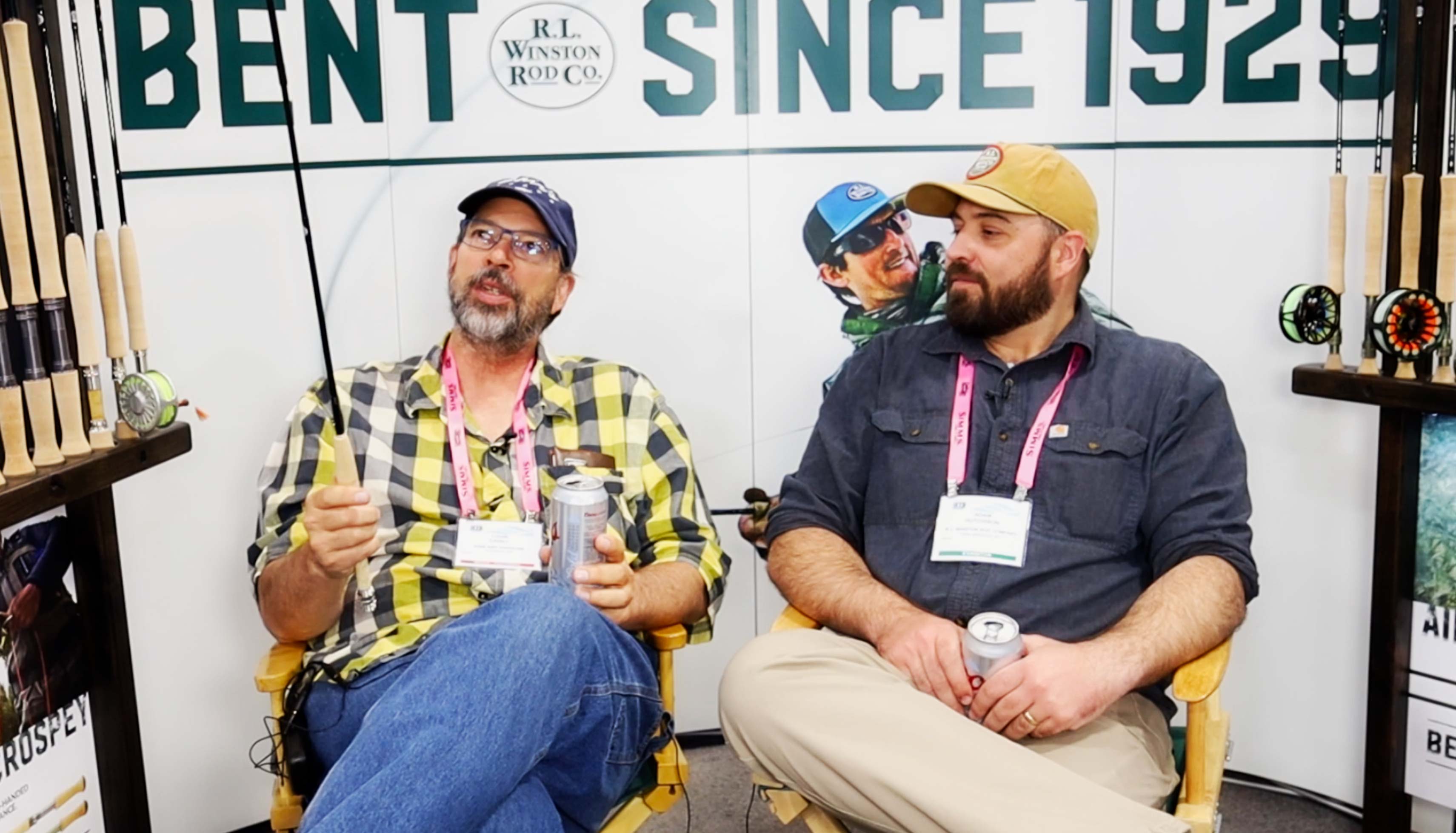
Winston makes a statement with the new Air 2 fly rod.
IFTD was defiantly small this year. One of the upsides of that was, I actually got to cast some rods. Winston’s new Air 2 floored me, and apparently everyone else as it took home the award for best freshwater fly rod. In this video Adam Hutchinson and I talk about what makes the Dark Horse special and the road ahead for Winston. There’s also a little spontaneous discussion about beer of choice. Some of you may approve.
HAVE A BEER AND HEAR ALL ABOUT THE NEW WINSTON AIR 2 FLY ROD!
Read More »6 Ways To Instantly Start Taking Better Fish Photos

By Kyle Wilkinson
Long before the days of Instagram or Facebook, taking pictures of a prized catch was still a big part of the fishing experience for most anglers. As you might be able to imagine, I see A LOT of fish pictures given my current occupation. I also take a lot, too. Now I know everyone has their own opinion about how to appropriately photograph a fish (or if it should even be done) but the fact remains that the good ol’ grip n’ grin is here to stay. In my opinion there’s nothing wrong with this either. And while these days I certainly don’t take a picture with every fish I catch and more often than not try to focus on a more ‘creative’ approach to my fishing photography, sometimes it still feels good to simply hold one up for the camera.
But back to the point of this. As mentioned, I see a lot of fish photos and quite truthfully, a lot of them are pretty bad. If you’ve ever found yourself telling your buddies ‘this picture doesn’t do this fish justice’ (while secretly wondering why that 20” brown looked more like 12” in the photo) then I suggest you read on. Not only will these tips lead to better fish photos, it will also ensure you’re taking better care of the fish by getting your shot quicker, and therefore getting the fish back to the water (you guessed it)…..quicker.
1. Get Down- This is a simple one and in my opinion, helps the fish out just as much as your photographic desires. Once you’ve landed the fish and are near a shallow area, get down on your knees to handle/photograph the fish. Just as important, however, is that your photographer does the same. Your goal here is to get the camera having a straight line shot at you and the fish. Another benefit to this method is that if the fish does slip out of your hands back into the water, it’s going to have a much shorter/safer fall. Additionally, always keep the fish over water in the event it does end up back in the drink quicker than expected. Fish are no different than us in the fact that it feels much better to fall into water than onto rocks.
2. Belly To The Bottom- This is another one I see time
Read More »Have A Plan Before You Tie
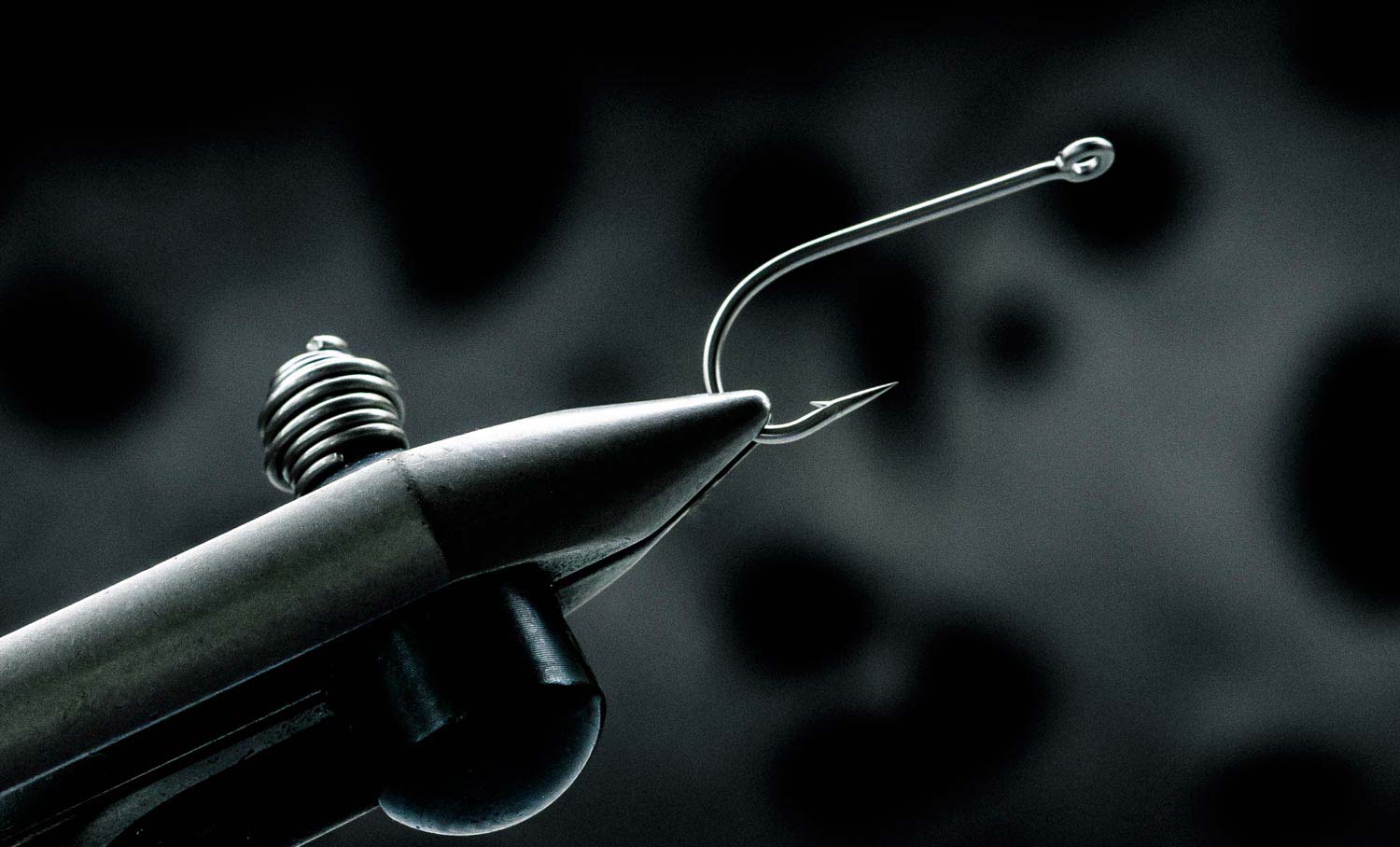
By Justin Picket
I literally just walked away from my tying desk and I am now sitting in front of my laptop…
And not because I just finished whipping up a ton of awesome, fish-enticing flies and I need to order more materials. It’s quite the opposite of that. My idea was that, tonight, I would start refilling some of my boxes for the busy guide season that Spring brings with it, but I didn’t get anything done at all. I tied three flies (none of them the same) and then I got frustrated and had to walk away. Why?
It’s pretty simple. When I sat down at my desk and planted a hook in the jaws of my vise, I didn’t have a plan. I had some hooks. I had some beads. I had some thread. That was about as far as my planning went. I had a multitude of materials strewn all over the place. Bucktail. Sili legs. Mallard flank. Goose biots. UV resin. Marabou. None of it in any kind of order. Sitting there, staring at the mess that is my desk, I was unable to focus on the task that I intended on accomplishing this evening. I wasn’t able to find half the materials I needed, which only frustrated me and pulled me even further off task. My tying session had turned into some sort of “squirrel gone mad” moment and I couldn’t decide which pattern I could tie efficiently with the materials that I knew I had, but probably couldn’t find anyways. Don’t be me! Here’s a few quick tips to help keep you on task while you are sitting at your vise!
Read More »Wood is Good
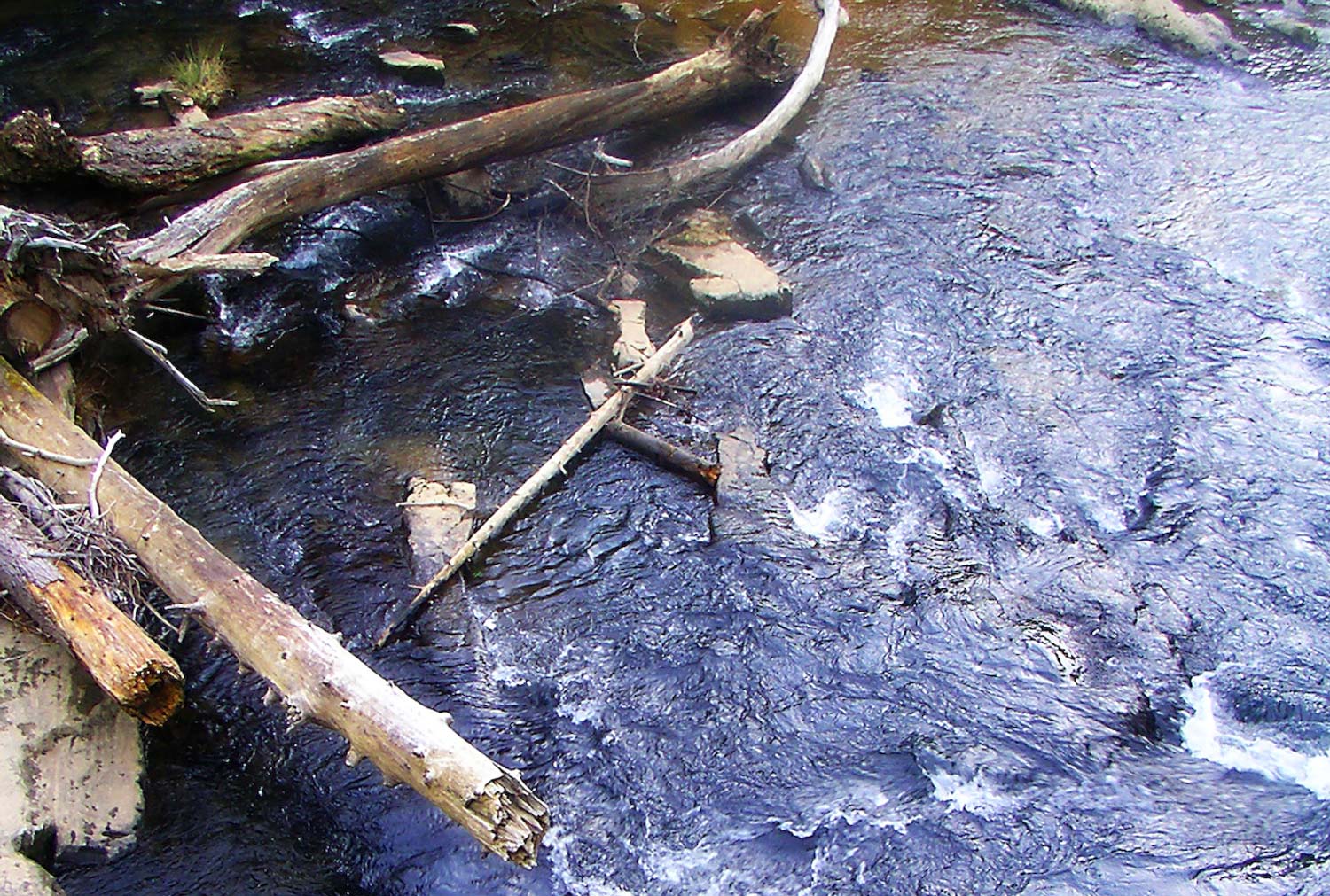
Target Woody structure and catch more fish.
“Wood is good”, shouted Sam Cornelius manning the oars, as I concentrated on drifting my flesh pattern against the never ending medley of wood snags along the Togiak River banks in Alaska, back in 2006. “When ever you see wood, drift your flies as close to it as you can, because fish are usually close by.
Read More »The New and Improved Simms G3 Waders: Video

You have to be careful when you update an industry standard like the G3 Wader.
Fortunately, Simms knocked it out of the park. The new G3 waders take quality and design to the next level. I was, frankly, shocked at the look and feel of these waders. Every bit as nice as the G4 waders I have worn for years. If you’ve been putting off updating your waders, now might be the time.
WATCH THE VIDEO TO HEAR ABOUT ALL THE UPGRADES TO THE NEW SIMMS G3 WADERS.
Read More »A Southern Angler in Patagonia
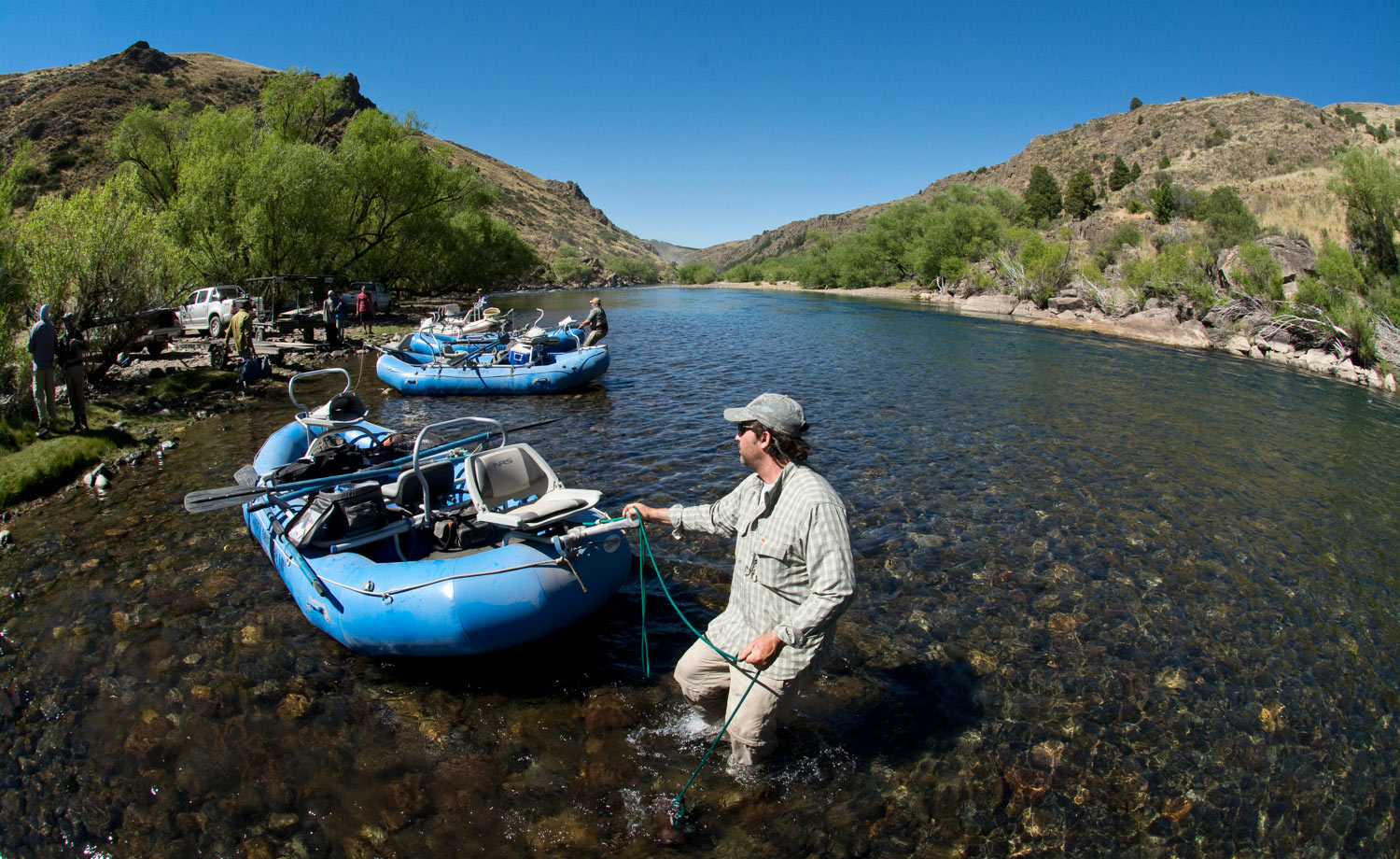
By Kevin Howell
AS THE VOICE OVER THE INTERCOM SAID, “EN PREPARACION PARA EL ATERRIZAJE” (IN PREPARATION FOR LANDING) I STARTED TO GET THAT FEELING IN MY STOMACH.
Was this trip going to be worth the travel and the money, what was the weather going to be like, what if I had a bad guide? After all, the guide said he would meet me at the airport and I had no idea of what he looked like. What if he was like the crazy Panamanian I was stuck with for a week a few years back? What if my Spanish was not good enough to communicate (well I knew that would be a problem)? But the biggest growing question in my stomach was what would the water be like, was it too large for this southern fly angler, would it be muddy, would it be clean and pure, would there be a hatch, if so what kind of strange insects would there be?
As I exited the plane I was whisked into a large room with all the other passengers where all of our bags including our backpacks had to be scanned (Security after getting off the plane? Man, they are tough here, I thought). Turned out it was a checkpoint for entering Patagonia– a region that is so unique and ecologically diverse that you are scanned on entry to ensure that you are not carrying any unprocessed fruits, vegetables, flowers, meats, etc. that could possibly take root in Patagonia. After clearing what seemed to be checkpoint Charlie, I found my guide holding a sign waiting for me. He promptly grabbed my baggage, carefully placed in the truck, handed me a cold water and stated in perfect English that it was only 2 pm and we could be on the water in 30 minutes and there should be a great evening hatch of tan caddis. Whew, what a relief!!
Sure enough, within 30 minutes I was standing beside the Rio Chimehuin–a stream about the size of the Watauga River–stringing a 5 weight Sage in preparation for the afternoon’s fishing. As Gustavo slid the raft into the river, I rigged a size 12 Elk Hair Caddis per his instructions with a prince nymph dropper. I landed nearly 30 trout that afternoon, switching periodically between the Caddis and a size 8 Hooper. As we left the river, I was thinking, man what else could you ask for? I was the only angler on the river, the fishing was awesome, the guide was fabulous and floating the Chimehuin was just like the rivers at home. Except that the Rhododendron had been replaced by willows beyond which lie nothing but rock and volcanic ash and scattered sage bushes.
Upon arriving at the lodge I was treated to a feast that could have easily feed a family. I could only imagine what tomorrow would bring as Gustavo had told me we were going to wade fish the Rio Malleo upstream from the Yellow Bridge and the fishing would be better than it was today. He told me that Coye would be by in the morning to see that I was awake and had breakfast and he would pick me up at 8 to head to the river. I awoke the next morning at 6:30 to the smell of fresh coffee and bacon cooking.
Almost like clockwork, Gustavo arrived, loaded all of my gear in the truck while I was finishing breakfast before I even had a chance to try and help. Arriving at the Malleo, I was blown away by
Read More »Fly Fishing: Being Outfitted Properly Should Always Be the #1 Priority
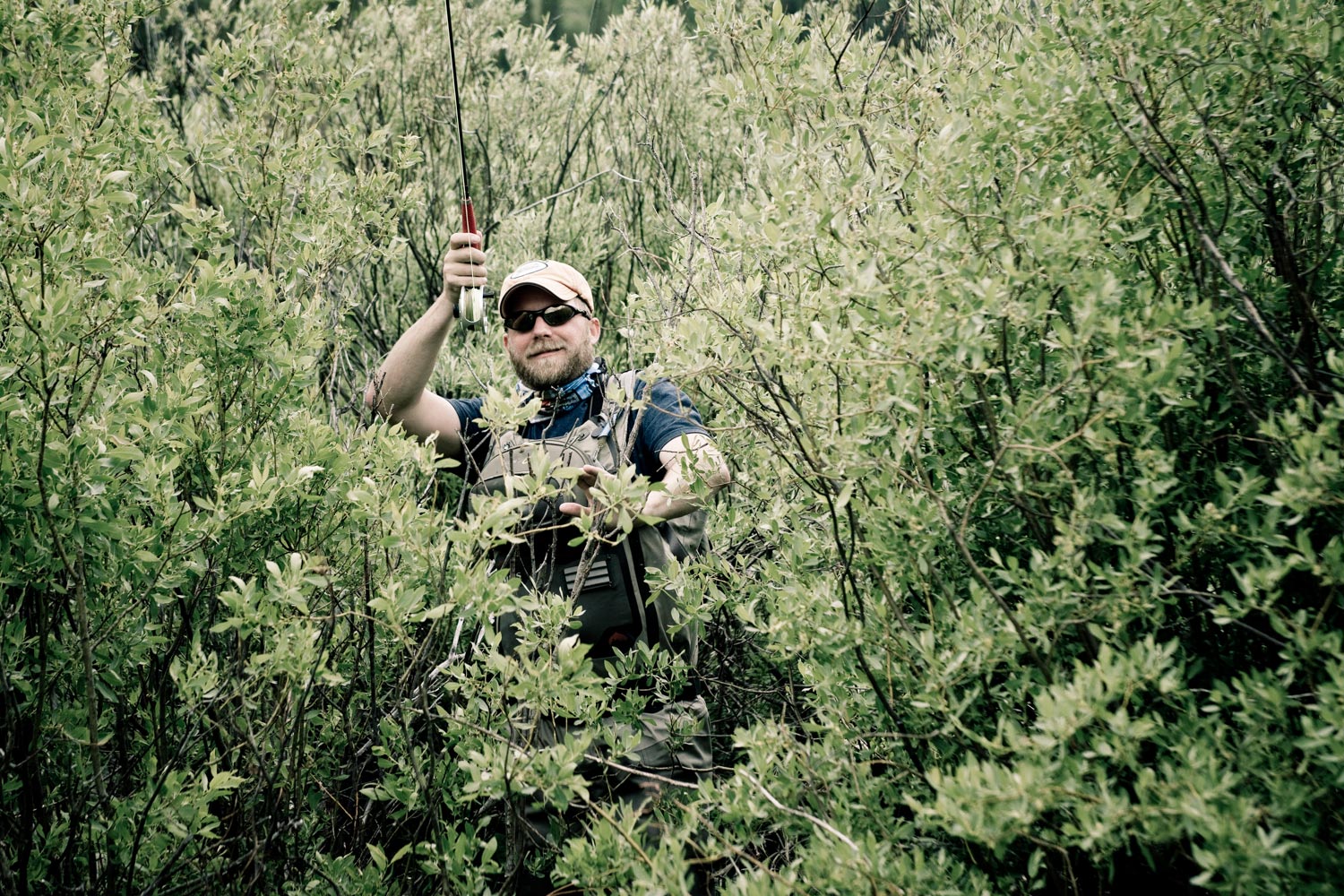
MANY CAN ATTEST TO THE FEELING OF PURE EXCITEMENT THAT COMES OVER US RIGHT AFTER WE’VE PARKED THE VEHICLE AND ARE FIXING TO HIT THE WATER FOR A GREAT DAY OF FLY FISHING.
It’s an awesome feeling, one quite frankly, that I never get tired of, because it opens the door for each of us to experience true freedom, solitude and adventure. And there’s nothing like the anticipation of not knowing how the day is going to play out for us. This feeling has gotten me into trouble many times over the years, and I’m sure that I’m not alone. Look back on some of your past trips and I bet you’ve had a time or two where you got in way too much of a hurry, and forgot to pack critical gear. We tell ourselves, “the sky is blue and there’s not a cloud in the sky. I don’t need to bring my rain jacket”. We leave that granola bar or bottle of water in the truck because we hit a food joint on the way into the river and sucked down a 20 ounce bottle of water. Sometimes, we get lucky and we don’t wind up needed the stuff we’ve left behind. Unfortunately, if you get in the habit of doing this too much, eventually it’s going to bite you in the butt. It happened to me on a recent wade fishing trip with Louis in WY.
I was chomping at the bit to get on the water. It had been two years since I’d made a trip out west fly fishing. My late flight into Jackson had got us off to a late start. Since fishing time was limited I decided to do something I never do, which was slap on my waders and hit the water in just a light weight t-shirt. I didn’t second guess myself since Louis told me that we’d only hit this one spot upstream, and then we’d head back to the truck and drive further up river. I took a few seconds to
Read More »